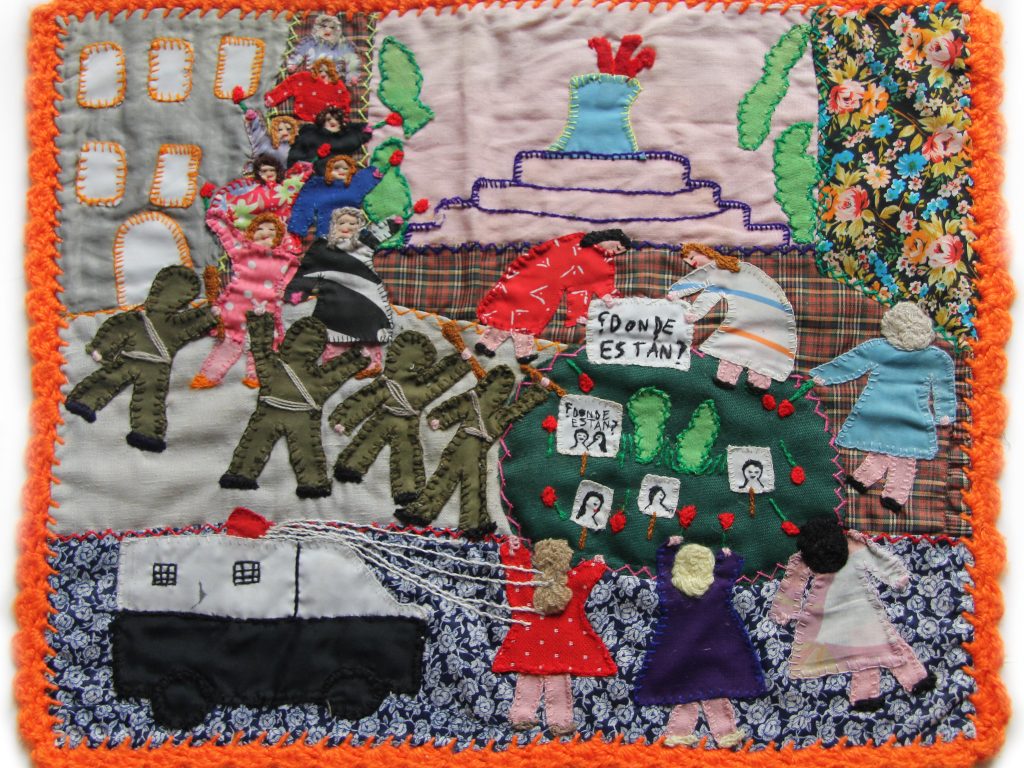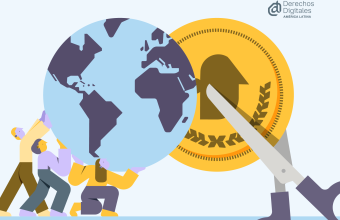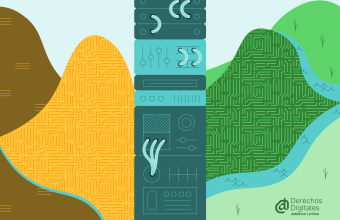The stories of the dictatorships that took place in and plagued Latin America in the 20th century have permeated students’ imagination for many decades. As part of the percentage of the population that grew in the 90s in Brazil, I grew up reading books, attending classes and watching movies on the topic. The Chilean dictatorship that ended in the 90s, as well as the struggle for education, marked imagery of struggle and resistance. South America, in addition to being the scene of dictatorships, was also the scene of bloody colonization, which even today leaves geographic and socioeconomic traces that permeate the way we deal with our socialization, electronic devices, and the Internet. However, local efforts struggle to transform the barrier and technological education, and feminist efforts work for another feminist infrastructure: What are the bases of this infrastructure that we have today, what does it have to do with the culture of domination, and how do we seek to transform it?
In hard times of dictatorship, families were devastated, people disappeared, violence affected the bodies of those who resisted, books were burned, and life at home was no longer the same. In Chile, while women who lost some of their loved ones in the resistance sought alternatives to feed their homes, they also took the opportunity to tell their stories and report the violence that affected their country. Arpilleras was a technique widely used in that period by women, in which they wove messages to report the horrors of the dictatorship; with their sale, they supported and fed their families. Throughout the world, women search within their possible technologies, alternatives for their livelihood, to make their voices heard, and their messages transmitted.
It was also at the end of Latin American dictatorships that submarine cables became a high international investment as the purpose of telecommunication between computers, forming the large Internet network that we have until today. In the century and earlier decades, submarine cables were used for telegraph communications.
Today, underwater fiber optic cables transmit more than 90% of the world’s Internet. They were built under a policy of war, and follow paths previously explored by trails of exploration of the old navigations. These 2.5 cm diameter cables carry the protocols and infrastructures that govern the speed of data, information transport, message encoding. They are also vulnerable to surveillance.
If the path of the Internet cables is as old as the period of navigation, an explanation of socio-economic interest may explain why more than 40% of the world population still does not have access to the Internet: its protocols and infrastructures are concentrated and in the power of certain governments and industries.
And this concentration is not only a socio-economic reflection but also reflects the producers of this technology. When the computers began to populate the homes of families in the Global South, who were the people with the power to exploit them? Who could mess with the cables and circuits, name them, turn them on and off? In my house, our first computer was in my brother’s room.
Take Consciousness and Take Back The Technology
The common language of women shares the historical and patriarchal awareness that governs our lives. But in order to become aware, it is also necessary to be intersectional, and also to explore its roots of class, race, and geography.
While the Global South, this socio-economic space that includes Asia (with the exception of Japan, Hong Kong, Macau, Singapore, South Korea, and Taiwan), Central America, South America, Mexico, Africa, and the Middle East (with exception of Israel)”, have a smaller percentage of their population with Internet access, compared to the countries of the Global North; it also has noticeably fewer backbones (submarine cables) of the global Internet network, and our rich and arrogant brother, has not only the prevalence in the transmission of data but also in its surveillance and censorship.
To change this scenario, women need to take back the technology – a common notion that has permeated technological feminism for some decades, but which is also reflected in academic feminist bibliographies, when we read that women need to occupy spaces of writing, scientific production, politics, among other spaces dominated by men; and mainly, created under a logic of war and exploitation. “Cyborg writing is about the power to survive, not on the basis of original innocence, but on the basis of seizing the tools to mark the world that marked them as other”, wrote Donna Haraway in her Cyborg Manifesto.
But we also know that we don’t want our protocols and infrastructures to be based on war, nor do we want the path of our data to be colonial. We do not want to arrive at the same place; we want to navigate in other ways, to arrive in places not navigated, which have other reasons in their base, besides war.
“Without an ethic of love shaping the direction of our political vision and our radical aspirations, we are often seduced, in one way or the other, into continued allegiance to systems of domination – imperialism, sexism, racism, classism.”
– bell hooks, Love as the Practice of Freedom
The common language of women is to know that our bodies are in a dispute of domination, from its superficiality to our minds, and to know, too, that we are the resistance. A resistance that is not based on war, but on the transformation of a world that we collectively build. From the arpilleras to la huelga feminista, we tell and make history and technology to more equitably serve our communities.

 Fondos de Derechos Digitales
Fondos de Derechos Digitales 113a Conferencia Internacional del Trabajo
113a Conferencia Internacional del Trabajo Infraestructuras tecnológicas y medioambiente
Infraestructuras tecnológicas y medioambiente